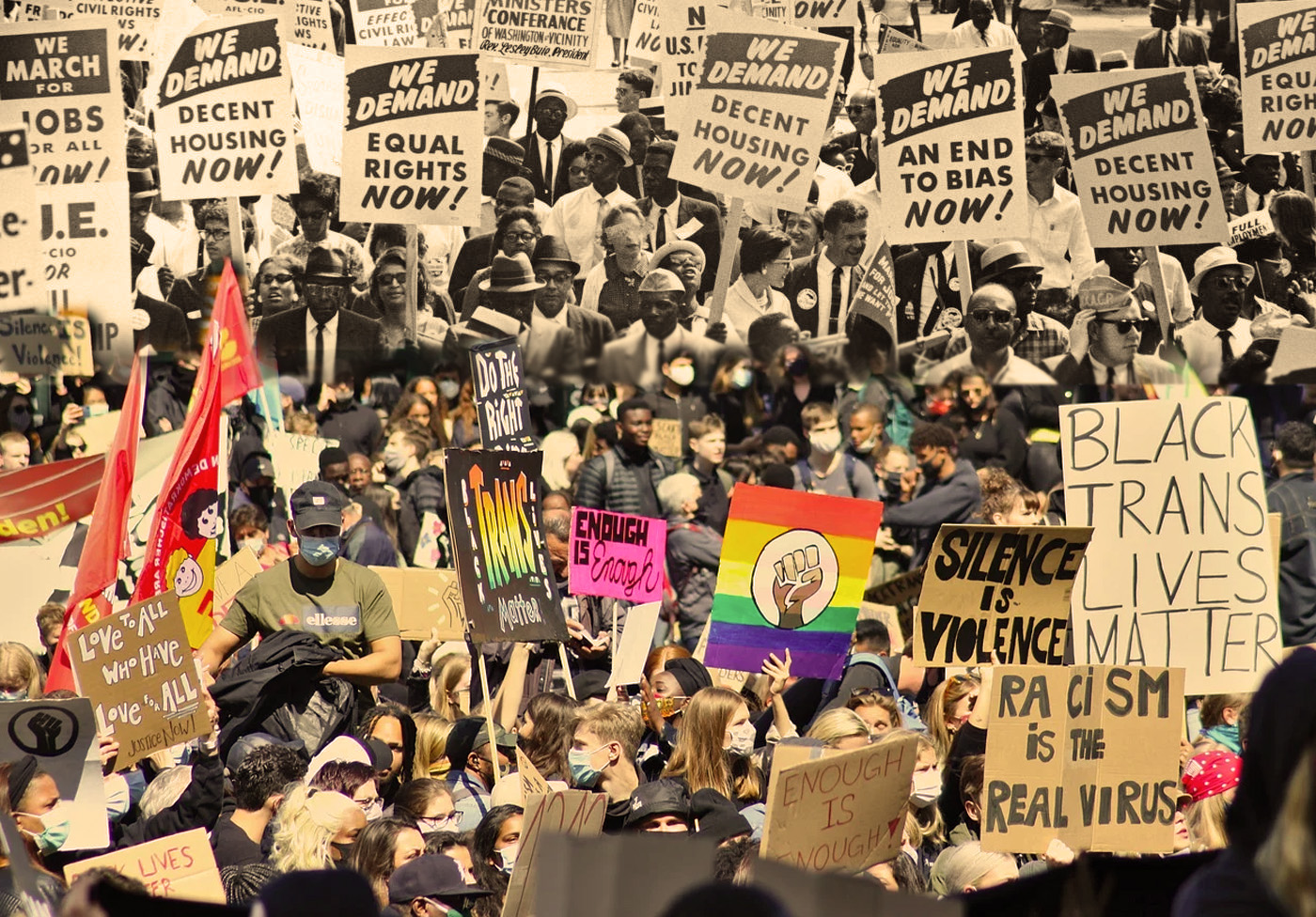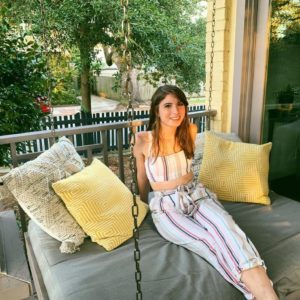After months in lockdown, Americans boiled over when police murdered George Floyd and Breonna Taylor. Uprisings and protests multiplied around the country, and continue to this day. Demands like police abolition suddenly became mainstream after years of Black activists organizing around the idea. In Washington D.C., protestors yanked barricades from police, graffitied “capitalism is murder” on government buildings, and took control of what is now Black Lives Matter Plaza. This wasn’t senseless violence or destruction for its own sake, it was liberatory. People from all walks of life were demanding that relentless, racialized police violence must end. For many, this moment felt expansive, terrifying, and freeing.
These weren’t the first protests against American state sanctioned police violence, and they certainly won’t be the last. In the United States, police were created as strikebreaking forces and slave patrols. The Watts Uprising in Los Angeles in 1965 started when a black man was pulled over and beaten by police. Twenty six years later, a video of LAPD officers injuring Rodney King emerged and the city revolted when the cops were acquitted of wrongdoing the next year. Similarly, the city of Ferguson, Missouri rose up once after police officer Darren Wilson killed Michael Brown, and again when he was not indicted. Around this time, the Black Lives Matter movement was born.
The first night I went to the White House, May 29, I was paralyzed with fear. I sat in the well-kept grass of Lafayette Park, watching the rain reflect off of riot shields and blinding lights. Guttural yelling filled the air, an anger justifiably uncontained. I walked home, shaken and alone. But later in the daylight, everything felt smaller. The cops weren’t an insurmountable force, they looked nerdy in uniform and on their issued bikes.
The next day as the sun was setting behind the White House, I was teargassed and shot with pepper bullets for the first time. This moment and all the other violent ones to follow showed me the meaning of “solidarity.” I knew I was going to be okay because everyone had each other’s backs; A Latinx woman in her late twenties gave me water when I was coughing, and asked repeatedly if I needed more. I directed an older Black man with bloodshot eyes to a medic, and stayed to make sure he was okay. A sense of pride and fierce dedication swelled within me. I was a part of a multiracial movement that could change the world. I could use my privilege for good.
But every morning, I would check Twitter and see how the movement was being called “problematic” from all the sides of the political spectrum. Conservatives trotted out the tired description of protestors as unjustly violent and dangerous. On the other hand, liberal narratives emerged that white, outside agitators were engaging in violence, while black protestors were trying to be peaceful. Media was funnelling spontaneous uprisings against police violence through a filter, one which was entirely untrue in my experience. I witnessed that most of the white people present at the protests were willing to put their bodies on the line for Black lives. Leaders would yell, “White people to the front!”, and we went. However, as the movement became more peaceful and corporatized, books like White Fragility soared to the top of the bestseller list. These messages emphasize white guilt, rather than white solidarity with the BLM movement.
I can pinpoint the moment this change happened in DC. On June 1, I was strolling through Lafayette Park before the newly instated 7pm curfew. My friend was eating a peanut butter and jelly sandwich. We wanted to briefly check out the scene before going home. The sun was still shining, and protestors were laughing and chatting between chants. About twenty minutes before curfew, police and the National Guard started marching towards us ominously. We were forced to push back. A line of cops stood on the other end of the street. We were trapped. Through clouds of tear gas, I could see people with blood dripping down their faces. We eventually snuck through a hole in the wall of police and ran home. We let our heart rates settle and watched in disbelief as Trump used this moment as a photo op at St. John’s Episcopal Church.
The next day, June 2, the number of protestors had substantially increased. Trump’s media stunt was what finally pushed white liberals to come out en masse, but it was a double edged sword. Chants like “vote him out” replaced chants of “abolish the police.” The sense of trust between protesters across race and ideology was gone. Many of the newer protestors were worried about becoming the problematic white agitators they saw on the news, so they avoided any radical action and encouraged others to do the same. They were so focused on their own image as “activists” that they couldn’t allow themselves to take meaningful action. A recent Instagram post from the DC based activist group Theythem Collective emphasized that they refuse to work with “predominately white led orgs” that use tactics like “cooperating and coordinating with the police when forming direct actions, and movement formation.” On the other hand, the radicals were worried about undercover cops after chilling stories of arrests using surveillance and internet usage emerged. By June 6, protests began to feel more like block parties than demonstrations against mass death.
There were other spurts of radical action in DC in the weeks that followed. A statue of Confederate general Albert Pike was taken down, and protestors who now face legal consequences attempted to remove the statue of Andrew Jackson in Lafayette Park. Still, I’ve been reaching for that initial sense of community protection since June 2, and it always feels just out of reach.
One of the most famous quotes in Judaism comes from Rabbi Hillel. “If I am not for myself, who will be for me? But if I am only for myself, who am I? If not now, when?” Hillel understood what many white liberals, Jewish or otherwise, don’t. Protesting because President Trump offends your personal sensibilities, because you need a picture for your Instagram story, or because you feel the burden of white guilt, isn’t living for others. It is living only for yourself.
This movement to defund the police and others like it will go far beyond the Trump presidency or Instagram or White Fragility. It’s about creating a future where life matters more than property, where social services are provided instead of criminalized, and where carceral institutions are obsolete. So next time you’re on the street, ask yourself “Who am I?”

